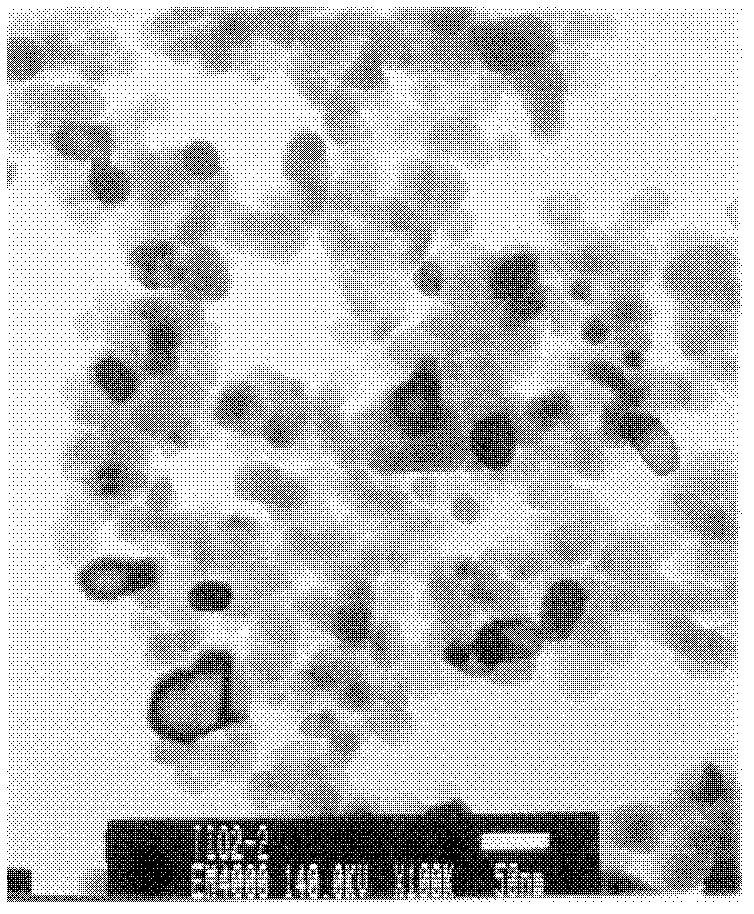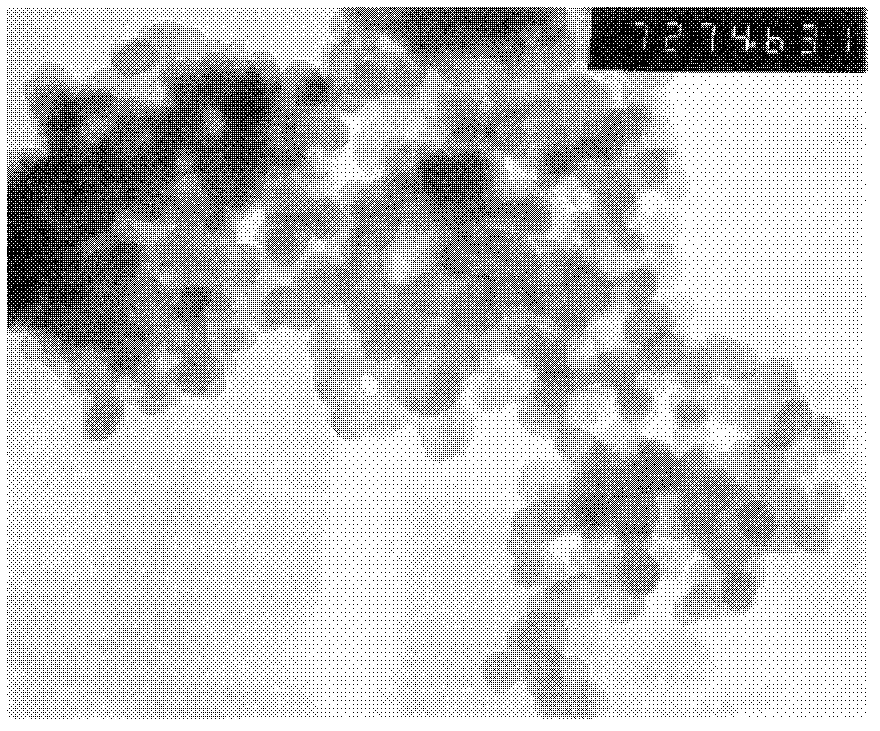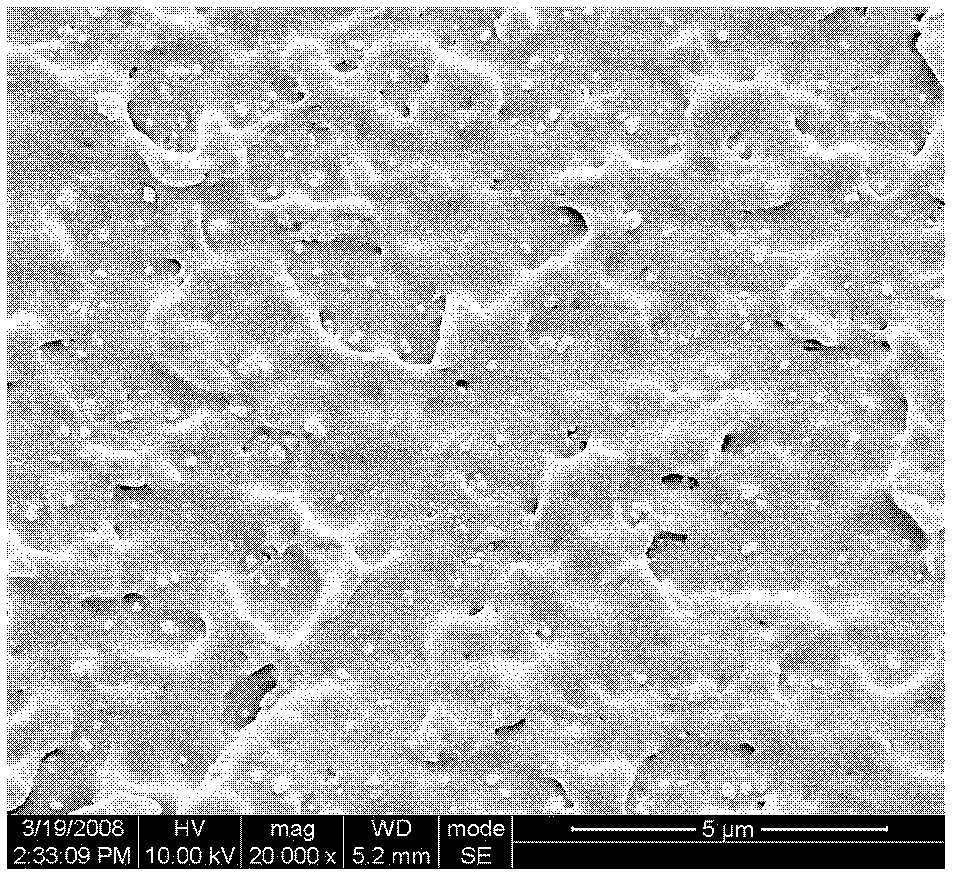Starch based nanometer photocatalytic composite degrading modifying agent and preparation method thereof
A modifier and nano-light technology, which is applied in the field of environment-friendly and fully degradable starch-based nano-photocatalytic composite degradation modifier and its preparation, can solve the problems of physical and mechanical performance decline, difficult processing, slow degradation speed, etc., and achieve Improve the compatibility and binding force, increase the degradation rate, improve the effect of dispersion
- Summary
- Abstract
- Description
- Claims
- Application Information
AI Technical Summary
Problems solved by technology
Method used
Image
Examples
Embodiment 1
[0044] First put 25 parts each of anatase nano-titanium dioxide with a particle size of 30-50nm and nano-cerium oxide with a particle size of 30-50nm into an ultra-high-speed mixer, and stir for 30 minutes at 3000 rpm, during which 1.5 parts of γ- Add the mixture of aminopropylmethyldiethoxysilane and 100 parts of absolute ethanol in 3 times. After the addition, continue to stir and mix at a high speed for 2 hours, then filter with suction, dry the powder at 100°C, and put Put into a ball mill and pulverize for at least 1 hour.
[0045] 2 parts of the nano-auxiliary after the surface modification obtained and 20 parts of triethyl citrate were dispersed by colloid mill for 2 hours, then mixed with 80 parts of rice starch, 15 parts of polyvinyl alcohol of 1799 and tetrakis (β-(3, Put 1 part of 5-di-tert-butyl-4-hydroxyphenyl) propionate) pentaerythritol ester antioxidant into a high-speed mixer, stir for 20 minutes at a temperature of 80 ° C and a speed of 100 rpm, discharge, an...
Embodiment 2
[0047] First put 30 parts of nano-cerium oxide with a particle size of 30-50nm into an ultra-high-speed mixer, and stir for 20 minutes at 4000 rpm, during which 0.5 parts of γ-aminopropylmethyldiethoxysilane and no The mixed solution of 50 parts of water and ethanol was added in 2 times. After the addition, continue to stir and mix at ultra-high speed for 2 hours, then filter with suction, dry the powder at 110°C, and put it into a ball mill for grinding for at least 1 hour.
[0048] 1 part of the obtained surface-modified nano-auxiliary, 3 parts of polyoxyethylene polyoxypropylene ether block copolymer with a relative molecular weight of 1000 g / mol and 7 parts of acetyl tri-n-butyl citrate were dispersed through a colloid mill for 1.5 Hours, then with 50 parts of cornstarch, 30 parts of mung bean starch, 17 parts of polyvinyl alcohol of 1799 and 0.5 part of 2,2'-methylene bis(4-methyl-6-tert-butylphenol) antioxidant, drop into high speed In the mixer, stir for 20 minutes at a...
Embodiment 3
[0049] Embodiment 3 (the embodiment 3 of corresponding packing bag)
[0050] First put 40 parts of anatase-type nano-titanium dioxide with a particle size of 30-50nm and 10 parts of nano-cerium oxide with a particle size of 30-50nm into an ultra-high-speed mixer, and stir at 5000 rpm for 10 minutes, during which 1.5 parts of γ - The mixture of aminopropylmethyldiethoxysilane and 100 parts of absolute ethanol was added in 3 times. After the addition, continue to stir and mix at a high speed for 1.5 hours, then filter with suction, dry the powder at 110°C, and then Put into a ball mill and grind for at least 1 hour.
[0051] 1.5 parts of nano additives after the surface modification obtained and 5 parts of polyoxyethylene polyoxypropylene ether block copolymers and 10 parts of acetyl tri-n-butyl citrate with a relative molecular weight of 2000 g / mol were dispersed by a colloid mill for 2 hour, then with 30 parts of lotus root starch, 42 parts of potato starch, 20 parts of polyv...
PUM
| Property | Measurement | Unit |
|---|---|---|
| particle diameter | aaaaa | aaaaa |
| particle diameter | aaaaa | aaaaa |
| particle diameter | aaaaa | aaaaa |
Abstract
Description
Claims
Application Information
 Login to View More
Login to View More - R&D
- Intellectual Property
- Life Sciences
- Materials
- Tech Scout
- Unparalleled Data Quality
- Higher Quality Content
- 60% Fewer Hallucinations
Browse by: Latest US Patents, China's latest patents, Technical Efficacy Thesaurus, Application Domain, Technology Topic, Popular Technical Reports.
© 2025 PatSnap. All rights reserved.Legal|Privacy policy|Modern Slavery Act Transparency Statement|Sitemap|About US| Contact US: help@patsnap.com



